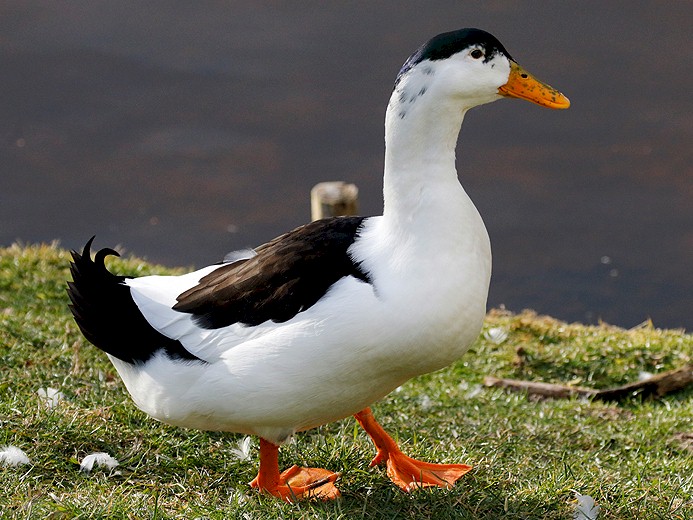Duck Breeds
 |
| Photo Source: Wikipedia.org |
Magpie Ducks are a British breed of domestic fowl. They have distinctive black and white markings reminiscent of the European magpie, and are a good layer of large eggs.
They are commonly reared for showing. They were originally bred as a commercial or utility bird, to provide meat and eggs. They lay approximately 80 eggs per year. They vary in color from white to pale green, and weigh about 65 g. The 'Paramount' strain reared by Oliver Drake in the early twentieth century reportedly laid 185 eggs per year, and reached slaughter weight in about 11 weeks.
The Magpie was originally bred to have black-and-white markings reminiscent of those of the magpie: white, with black on the top of the head, a black back and tail, and black scapulars which form a heart-shaped black area on the back when the wings are folded. With age the black may become flecked with white or wholly white. Three other color varieties with the same pattern are recognised by the Poultry Club of Great Britain: blue-and-white, dun-and-white and chocolate-and-white.
The birds are of medium size; drakes weigh some 2.5–3.2 kg (5.5–7 lb), ducks 2.0–2.7 kg (4.5–6 lb). The body is carried at an angle of about 35° to the horizontal when the bird is in motion.? The neck is long and curved, the breast full, and the back broad. The bill is broad and long; it is yellow when the bird is young, turning with age to gray-green in ducks and green-spotted yellow in drakes. The legs and feet are orange, sometimes with dark mottling.
The American Poultry Association recognises only the blue and black color varieties, and recommends a slightly lower body weight.
The Magpie breed of duck was developed in Wales by M.C. Gower-Williams and in Yorkshire by Oliver Drake after the end of World War I. Its ancestry is uncertain, but it may have originated from the Indian Runner, with some influence from the Huttegem of Belgium. In 1921, the breed was first described, and a breeders' club was established in 1926. A breed standard was published in the same year in a supplement to the Poultry Club Standards, which recognized two color varieties: black-and-white and blue-and-white. The black-and-white was the only color recognized by the Poultry Club of Great Britain until 1997, when blue-and-white and dun-and-white were also recognized. The chocolate-and-white variety, which was developed by German breeders, was later added.
In Germany, the Altrheiner Elsterenten, a duck with the same plumage pattern as the Magpie, was bred by Paul-Erwin Oswald in the 1970s. The Entente Européenne considers it the same breed. The Magpie was exported to the United States in 1963, but did not gain widespread popularity. It was admitted to the American Standard of Perfection in 1977.
The conservation status of the Magpie is uncertain, with the FAO listing it as "critical" in 2007 and the DAD-IS database labeling it as "unknown" in 2022. It was not included in the Rare Breeds Survival Trust's 2021-2022 watchlist of priority breeds. The most recent population data available, which was reported to DAD-IS in 2002, estimated the number of Magpie ducks to be between 60 and 100.
